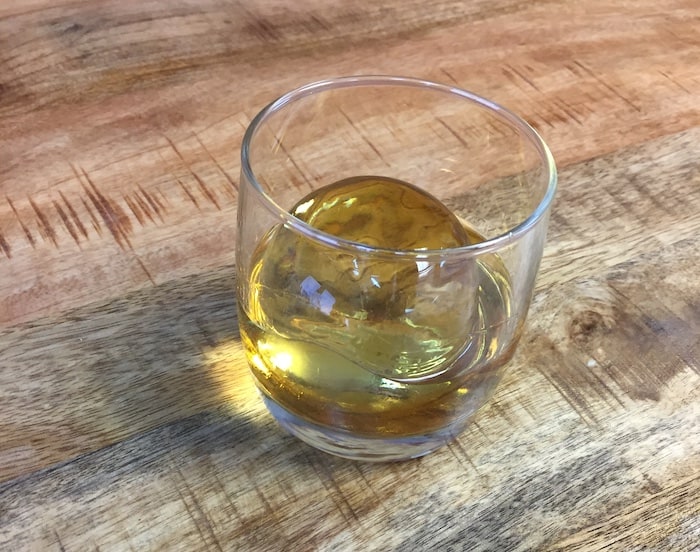There are many things whiskey lovers love to debate, but the particular question of adding water or ice to whiskey has been known to ignite raging (Twitter) infernos. So herewith, a look at the history and science of the effect of temperature and dilution on our favorite libation.
The history of whiskey is replete with wonderful myths and legends – the origin of the phrase “on the rocks,” meaning “with ice,” is likely one of those. Popular tales have it that Ye Olde Scotsmen would place cold river stones into their rough usquebaugh to tame some of its fire. But the OED doesn’t give us an oldest known usage, and several etymology websites date the phrase to 1946 without citing a source. Regardless, every whiskey drinker has a specific expectation if they order a dram using that phrase.
The idea supporting including ice is that it will make the whiskey more enjoyable to drink, while the contention is that dilution “dilutes” the flavor.

So which is right?
Well – purely anecdotally, mind you – I’ve heard that in certain parts of the U.S. South illicit liquor may be found in little mason jars in some folks’ freezers. It is apparently much easier to imbibe at sub-zero temperatures, then if the little jar had been left out on the counter.
There’s actual science to back that up. The ‘heat’ of beverage alcohol comes from the ethanol molecules triggering the nerve endings that respond to heat, and those in turn send a pain signal up to the brain. The higher the concentration of alcohol, the more the burn. Secondary compounds common in whiskey from the grains and the barrel act to exacerbate the effect.
But the human brain doesn’t like contradictory information, so a cold beverage which triggers the nerves in the opposite direction will actually cancel out the perception of heat in the brain. So that frozen ‘shine doesn’t seem quite so hot!
Ergo, ice = more enjoyable whiskey. But what about that dilution, I hear some people cry?
Dilution does, in fact, dilute the flavor of whiskey – in certain circumstances, but not in all.
A common tradition in Scotch is to ‘open’ a whisky by adding a few drops of water. Possibly inspired by the debate (or possibly to expense some whisky), in 2017 Björn C. G. Karlsson and Ran Friedman published a molecular analysis of dilution in whisky. Long paper short:
Thus, the taste of guaiacol and similar compounds will be more pronounced when whisky is further diluted in the glass. This taste-enhancement is counteracted by the dilution of guaiacol’s concentration. Overall, there is a fine balance between diluting the whisky to taste and diluting the whisky to waste. This balance will depend on the concentration and types of taste compounds that are characteristic for each whisky. Similar considerations can be used to optimise the alcohol concentration of other spirits including gin, rum and brandy.
So a Bourbon and Branch isn’t a bad thing, to a point.
In order for the opening effect to work (and not to take the whisky to waste), there must be specific types of taste compounds present at sufficient concentrations. It would seem then that, in general, higher proof whiskeys with high flavor potential are the best candidates for enhancement with water. Any whiskey, but especially the high proof variety, may benefit from the heat reduction induced by coolness. Individual mileage may vary.
When manipulating dilution and temperature in whiskey, “on the rocks” often offers the best of both worlds, with both a reduction in heat and an increase in flavor as long it doesn’t wash out. One option occasionally presented by bartenders is the ‘chilled and strained’ mechanism of stirring or shaking spirit over ice, then straining it and presenting it neat, preferably in a chilled glass. Another method is to use a large ice cube or sphere, with the latter having a smaller surface-to-volume ratio that will cause less dilution. The bigger the ice chunk, the better because the greater the thermal mass, the slower the melting.
If you’re playing along at home, remember that the quality of the water matters when making ice or adding it directly to whiskey. Tap water usually contains off-flavored compounds, so try using pure spring or distilled water instead.









